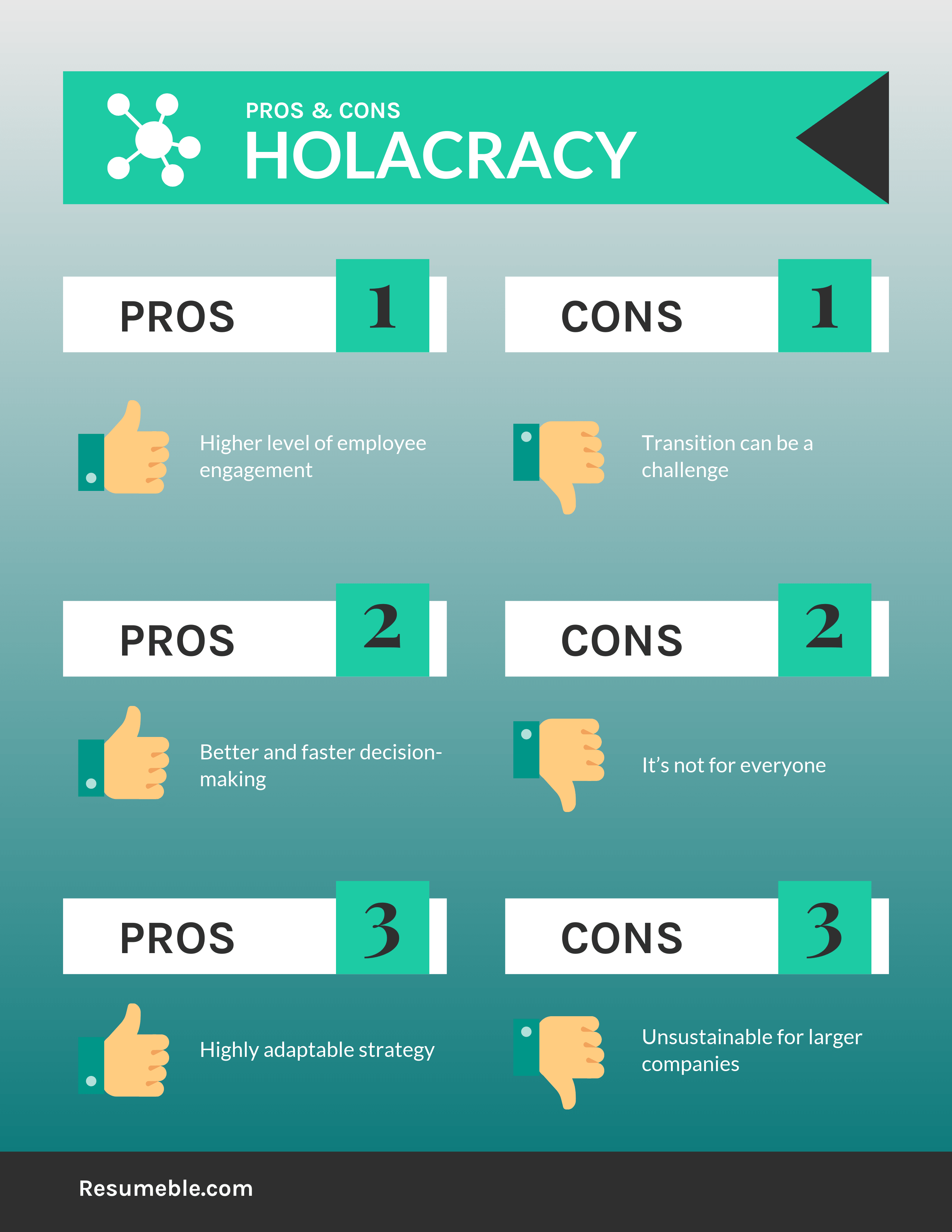Holacracy is an answer to the ever-changing workplace, specifically in firms where employees thrive in linear organizational structures that allow more flexibility and freedom.
Now you might ask, what is holacracy? Although it might sound like a radical, new age approach, it’s really not. In the last decades, business organizations have been trying to find ways to boost employee productivity and replace bureaucracy. Introduced in 2007 by entrepreneur Brian Robertson, holacracy is a modern corporate democracy where traditional job titles and the hierarchical group of managers and executives are scrapped in favor of self-organized teams and equal power distribution.
Read on to learn more on what is holacracy all about, what makes it unique, and how it can become a means for success in an organization.
Holacracy in Practice
Basically, holacracy aims to avoid the pitfalls encountered by the average workplace through four key differences, namely (1) roles instead of job titles and managers, (2) circular structure/teams, (3) rapid iterations, and (4) transparent rules as written in the 400-page holacracy constitution. In a holacratic workplace, employee roles are spread out in circles and employees have the flexibility to take on roles and tasks that interest them. They can even move between teams freely, provided that their efforts are still aligned with the organization’s purpose and goals.
Take note, however, that despite not having a hierarchy, a holacracy does not mean a lack of structure. In fact, holacracy has a clear and formal structure as guided by the holacracy constitution, but this structure is quite flexible.
Zappos, an online shoe and clothing retailer based in Las Vegas, Nevada, is among the largest companies implementing holacracy. With around 1,500 employees, Zappos implemented holacracy in 2014 to curtail office politics and allow the business to efficiently evolve. Medium, an online publishing platform with no more than 200 employees, also tried its hand at holacracy.
Pros and Cons

As with any other management system, holacracy has its own share of ups and downs. The following are some holacracy pros and cons that you should know about:
Advantages
• Higher level of employee engagement – since employees don’t answer to “bosses” and are allowed to work freely on what interests them, they tend to become more responsible and empowered. Each person can fulfill their roles undisturbed as long as it is in the best interest of both their circle and the company.
• Better and faster decision-making – this is among the most important benefits of holacracy. Given that power is evenly distributed, individuals can act immediately. There is no need to wait for the approval or decision from the higher-ups.
• Highly adaptable strategy – holacratic companies can update their structure on a monthly basis. Teams reevaluate their purpose and circles may move on to a new purpose or be dissolved completely. This allows the company to quickly address critical problems while maintaining a sense of continuity.
Disadvantages
• Transition can be a challenge – transitioning from a hierarchic to a holacratic structure can be difficult what with holacracy’s entirely new concept and the extensive holacracy constitution. Holacracy training will be necessary and a company may need to hire experts to guide them in the transition and implementation process. It might work, or it can become a total disaster. This is a risk that a business firm must be willing to take.
• It’s not for everyone – considering the nature of holacracy, employees who are likely to thrive in this structure should be independent thinkers and good self-managers. Unfortunately, not everyone can fit that profile and not all may be willing to adjust and adapt to a new system of working.
• Unsustainable for larger companies – holacracy may not be feasible for bigger companies what with the sheer number of circles and teams that need to be created. Moreover, when it comes to larger initiatives that call for coordination across functions, it can be divisive and time-consuming to achieve alignment.
Be Holacracy Ready
Holacracy may not be the standard structure by which all companies operate, but when you’re out searching for a job, it pays to be familiar with various business organizational trends—as you may very well find your dream position in a company that practices it. Who knows, you might want to apply for a position in Zappos, and a background knowledge on holacracy just might help you ace the job interview.
Let us at Resumeble take care of writing and organizing your resume, while you research and learn about your target companies and enhance your knowledge on the latest business trends. Give us a call today and we’ll take the resume writing or revising off your to-do list.
